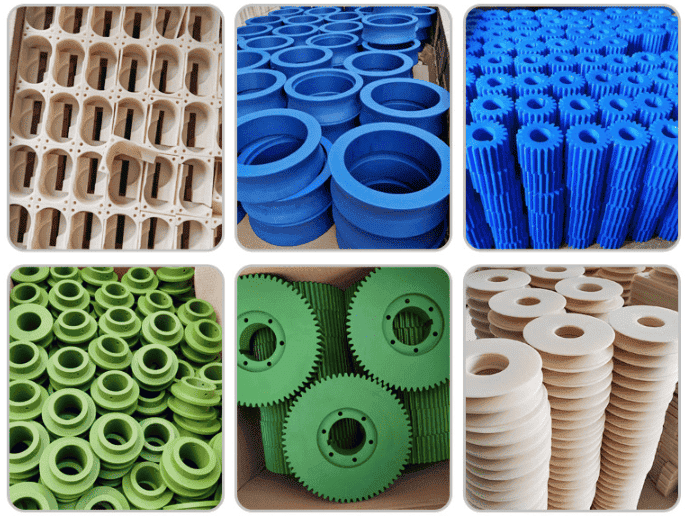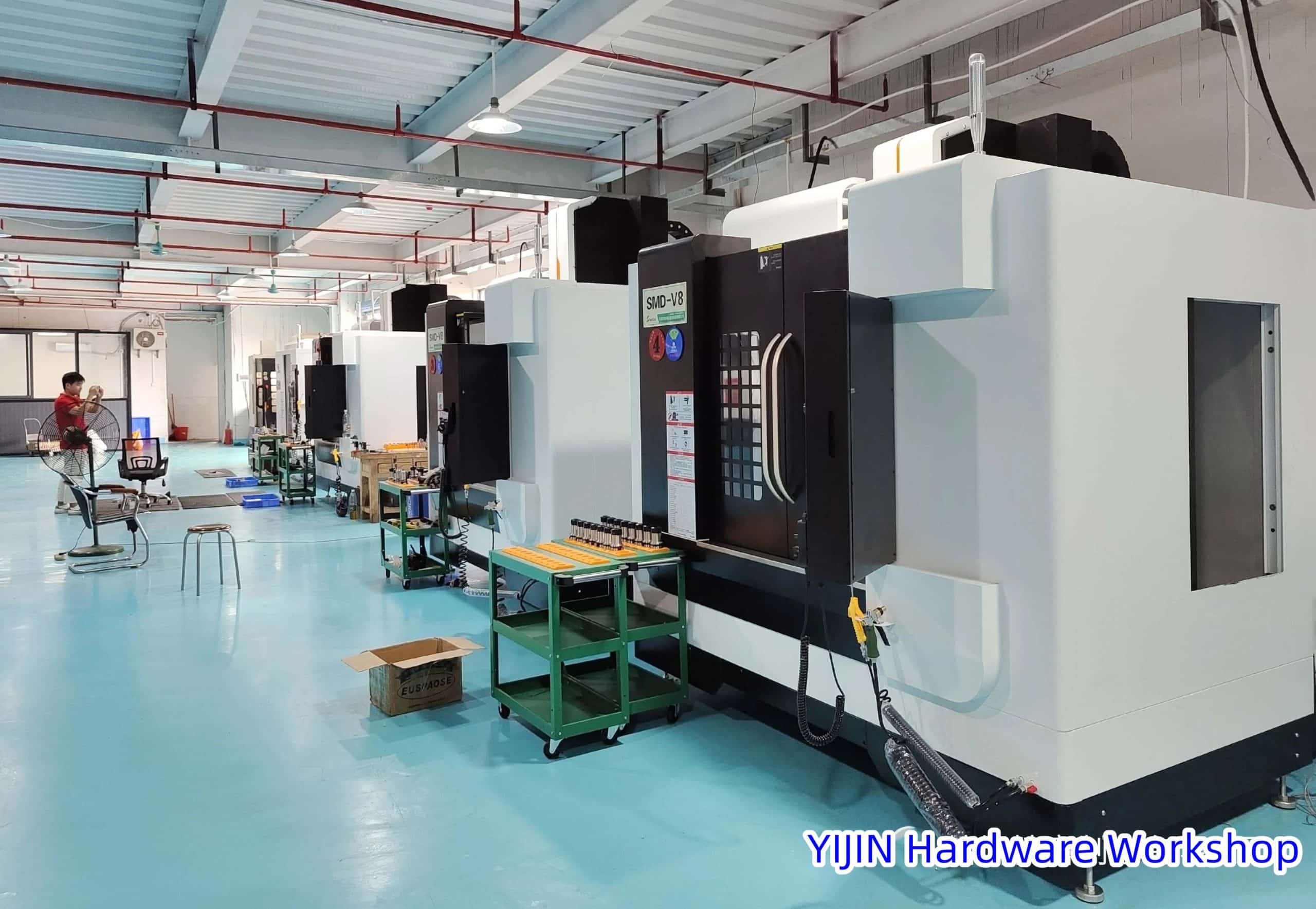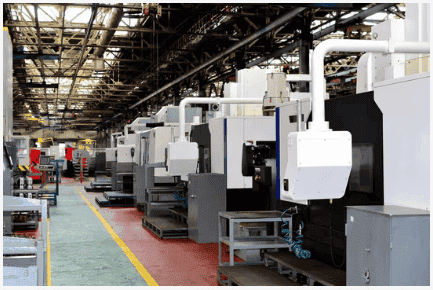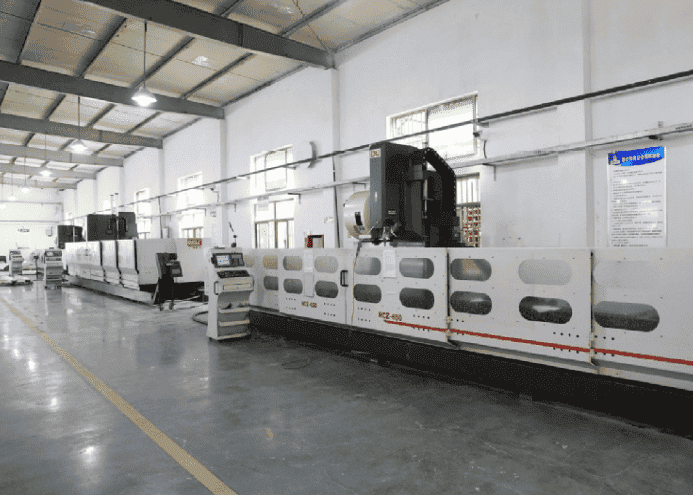In the rapidly evolving landscape of manufacturing, machined plastic parts have become indispensable components across various industries.
This article explores the intricacies of machined plastic parts, delving into their applications, benefits, and the machining processes that shape their precision.
1. Understanding Machined Plastic Parts:
In the dynamic realm of manufacturing, the term “machined plastic parts” stands as a testament to precision, versatility, and innovation.
Understanding the intricacies of this manufacturing process is crucial for industries relying on plastic components, as it sets the stage for superior quality, customization, and efficiency.
What Are Machined Plastic Parts?
Custom machined plastic parts encompass components created through machining processes, including CNC machining, using various types of plastics.
In contrast to conventional manufacturing techniques like injection molding or extrusion, machining entails extracting material from a solid block or sheet to attain the intended shape.
This subtractive manufacturing approach allows for unparalleled precision and customization in the production of plastic components.
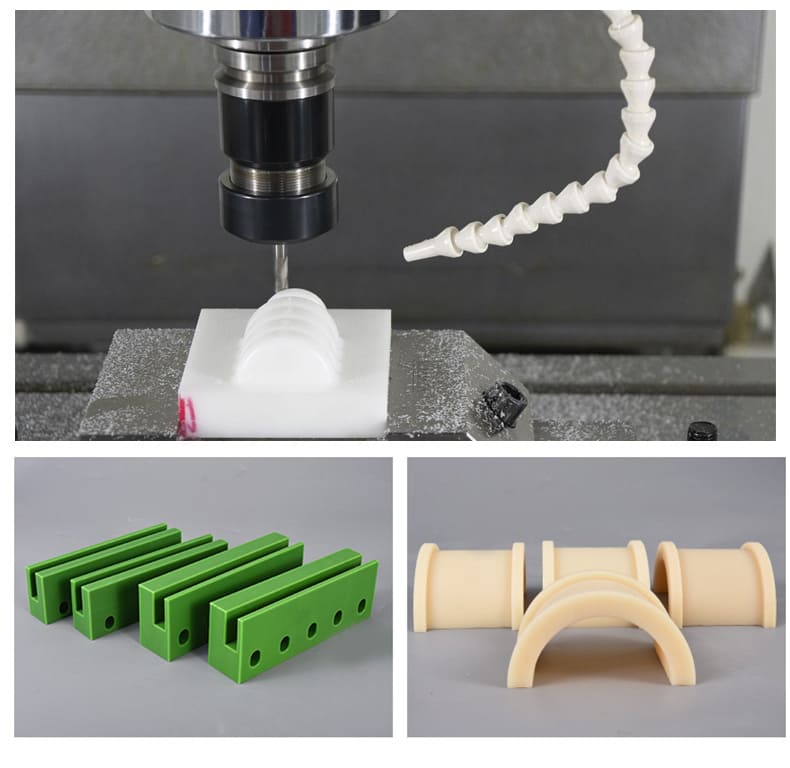
How Do They Differ from Other Manufacturing Methods?
Precision vs. Mass Production:
- Injection Molding: While injection molding excels in mass production, it may not always achieve the level of precision required for intricate designs or tight tolerances.
- Machining: Machined plastic parts shine when precision is paramount. CNC machining allows for the creation of highly detailed and accurate components, making it ideal for specialized applications.
Customization and Complexity:
- Extrusion: Commonly used for creating continuous shapes like pipes or tubing, extrusion may face limitations when dealing with complex geometries.
- Machining: Machined plastic parts offer unparalleled customization, making them suitable for intricate designs and complex structures, addressing the unique needs of various industries.
Material Flexibility:
- 3D Printing: While 3D printing provides versatility in material usage, it might not always meet the requirements for certain industrial-grade plastics.
- Machining: The machining process supports a wide range of plastic materials, ensuring adaptability to diverse industry demands without compromising on precision.
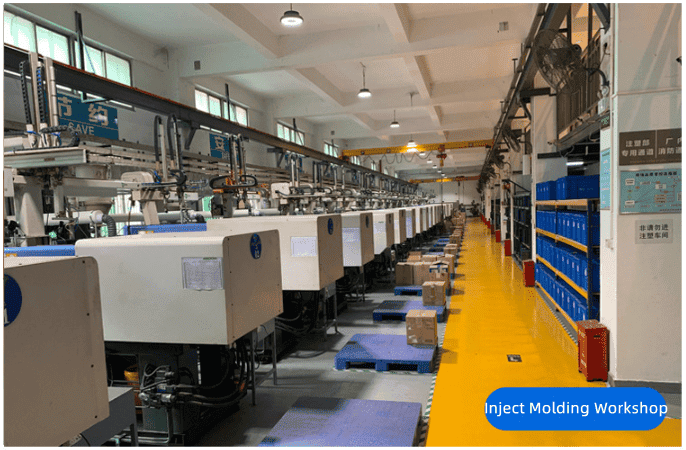
Importance of Precision and Accuracy:
Meeting Stringent Tolerances:
Precision in the production of plastic components is imperative, especially in industries where stringent tolerances are non-negotiable.
Machined plastic parts, crafted with the aid of CNC machining, guarantee the adherence to tight tolerances, ensuring each component meets exact specifications.
Enhancing Product Performance:
The accuracy achieved through machining processes translates directly into enhanced product performance.
Whether it’s a critical automotive component, a medical device, or an aerospace part, precision in manufacturing contributes to the reliability and functionality of the end product.
Custom Solutions for Unique Challenges:
In industries where one-size-fits-all solutions fall short, machined plastic parts shine. The ability to customize components according to unique specifications allows manufacturers to address specific challenges and requirements, fostering innovation and efficiency.
Reducing Material Waste:
Precision machining reduces material wastage by selectively removing material to achieve the desired shape. This not only enhances cost-effectiveness but also aligns with eco-friendly manufacturing practices, emphasizing sustainability.
2. Explore Different Types of Plastics Commonly Used in Machining
Understanding the different types of plastics commonly used in machining is pivotal for industries seeking precise and tailored solutions.
Join us as we explore the types of plastics used in machining and delve into the properties that make each type suitable for specific applications.
1. Acrylonitrile Butadiene Styrene (ABS):
Properties:
- Excellent impact resistance
- High tensile strength
- Good machinability
Applications:
- Prototyping
- Automotive components
- Consumer goods
2. Polyethylene (PE):
Properties:
- Lightweight
- Chemical resistance
- Low moisture absorption
Applications:
- Food packaging
- Medical Components
- Conveyor components
3. Polypropylene (PP):
Properties:
- Low density
- High chemical resistance
- Low moisture absorption
Applications:
- Laboratory equipment
- Automotive parts
- Packaging
4. Polyvinyl Chloride (PVC):
Properties:
- High chemical resistance
- Good electrical insulation
- Flame retardant options available
Applications:
- Electrical components
- Construction materials
- Signage
5. Polycarbonate (PC):
Properties:
- Exceptional transparency
- High impact resistance
- High-temperature resistance
Applications:
- Optical lenses
- Medical devices
- Aerospace components
6. Polyethylene Terephthalate (PET):
Properties:
- High strength
- Dimensional stability
- Good chemical resistance
Applications:
- Bearings
- Gears
- Electrical insulators
7. Polyoxymethylene (POM) or Acetal:
Properties:
- Low friction
- High stiffness
- Excellent wear resistance
Applications:
- Gears and bushings
- Precision parts in machinery
- Automotive components
8. Polytetrafluoroethylene (PTFE):
Properties:
- Low friction
- Exceptional chemical resistance
- Wide temperature range
Applications:
- Seals and gaskets
- Bearings
- Electrical insulation
9. Nylon (Polyamide):
Properties:
- High tensile strength
- Excellent wear resistance
- Self-lubricating
Applications:
- Bearings and bushings
- Gears
- Structural components
3. Applications Across Industries:
Automotive: Precision in Motion
In the automotive realm, machined plastic parts have become integral components, contributing to both aesthetics and functionality. Here’s how they are seamlessly integrated:
Interior Components:
- Machined plastic parts are employed in crafting intricate interior components, such as dashboard panels, instrument clusters, and trim pieces. The precision afforded by machining ensures a seamless fit and finish.
Engine Parts:
- Components within the engine compartment, including housings, brackets, and intake manifolds, benefit from the durability and heat resistance of machined plastic parts.
Exterior Elements:
- From sleek grilles to aerodynamic body panels, machined plastic parts contribute to the exterior aesthetics of vehicles while maintaining a balance between form and function.

Aerospace: Elevating with Lightweight Durability
The aerospace sector requires components that exhibit both lightweight characteristics and the ability to withstand extreme conditions. Machined plastic parts rise to the challenge:
Lightweight Components:
- Machined plastic parts, known for their exceptional strength-to-weight ratio, find applications in aerospace components where weight reduction is critical for fuel efficiency and overall performance.
Durable Solutions
- From interior cabin components to critical structural elements, machined plastic parts contribute to the durability of aerospace systems, providing reliable solutions for demanding environments.

Medical: Precision in Healing
In the medical field, where precision and biocompatibility are paramount, machined plastic parts offer tailored solutions for various applications:
Devices and Equipment:
- Surgical instruments, diagnostic equipment, and medical devices often incorporate machined plastic parts due to their precision, biocompatibility, and ability to meet stringent hygiene standards.
Bio-Compatible Components:
- Machined plastic parts play a crucial role in implantable medical devices, where materials with bio-compatibility are essential for ensuring the well-being of patients.

Electronics: Powering Connectivity
The electronics industry relies on machined plastic parts to ensure seamless connectivity, protection, and functionality:
Electronic Devices:
- Enclosures for electronic devices, connectors, and insulating components benefit from the precision machining of plastics, providing a protective yet functional housing for sensitive electronics.
Enclosures and Connectors:
- Machined plastic parts offer the necessary insulation and structural support for electronic enclosures and connectors, ensuring the reliable performance of electronic systems.
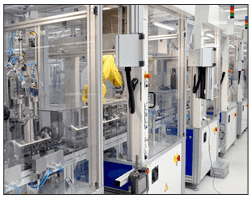
4. Machining Processes for Plastic Parts:
Machining processes for plastic parts are a testament to precision engineering, offering industries the flexibility and accuracy needed for crafting intricate components.
Let’s delve into the key machining processes that shape the world of plastic part manufacturing, ensuring that each piece meets exacting standards and unique specifications.
A. CNC Machining: Precision at its Core
Definition:
CNC machining, a versatile and extensively utilized process, employs computer-controlled machinery to precisely remove material from a plastic workpiece, crafting the intended shape with meticulous accuracy.
How it Works:
- Design specifications are translated into a computer-aided design (CAD) model.
- CNC machines, equipped with cutting tools, follow these digital instructions to carve, mill, or turn plastic materials into the final product.
Advantages:
- Unparalleled Precision: CNC machining offers micron-level accuracy, ensuring that each plastic part meets tight tolerances.
- Versatility: Suitable for a wide range of plastic materials, from ABS and PVC to high-performance thermoplastics.
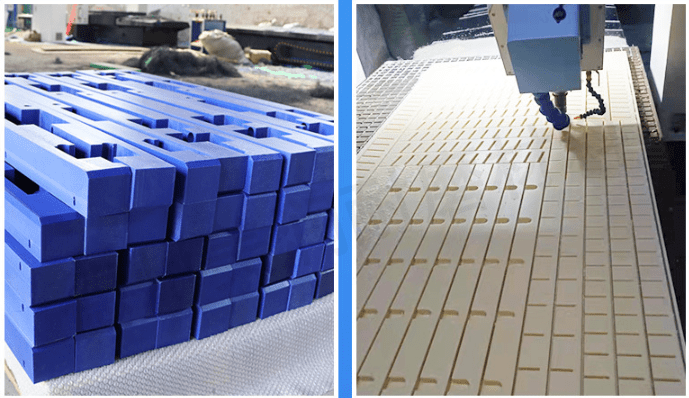
B. Thermoforming: Shaping Possibilities
Definition:
Thermoforming involves heating a plastic sheet until pliable, then stretching and shaping it over a mold to create the desired form, which is then trimmed to the final product.
How it Works:
- A plastic sheet is heated until it becomes malleable.
- The heated sheet is draped over a mold and formed into the desired shape.
- The formed part is cooled and trimmed to meet specifications.
Advantages:
- Cost-Effective: Thermoforming is often more economical for large, simple parts.
- Rapid Prototyping: Well-suited for creating prototypes and low-volume production runs.
C. Injection Molding: Mass Production Mastery
Definition:
Injection molding is a manufacturing process that entails injecting molten plastic material into a mold cavity. Subsequent cooling and solidification lead to the creation of the desired plastic part.
How it Works:
- Plastic pellets are melted and injected into a mold under high pressure.
- The mold is then cooled to solidify the plastic, and the part is ejected.
Advantages:
- High Efficiency: Ideal for large-scale production of identical plastic parts.
- Complex Geometries: Injection molding allows for the creation of intricate and complex shapes.
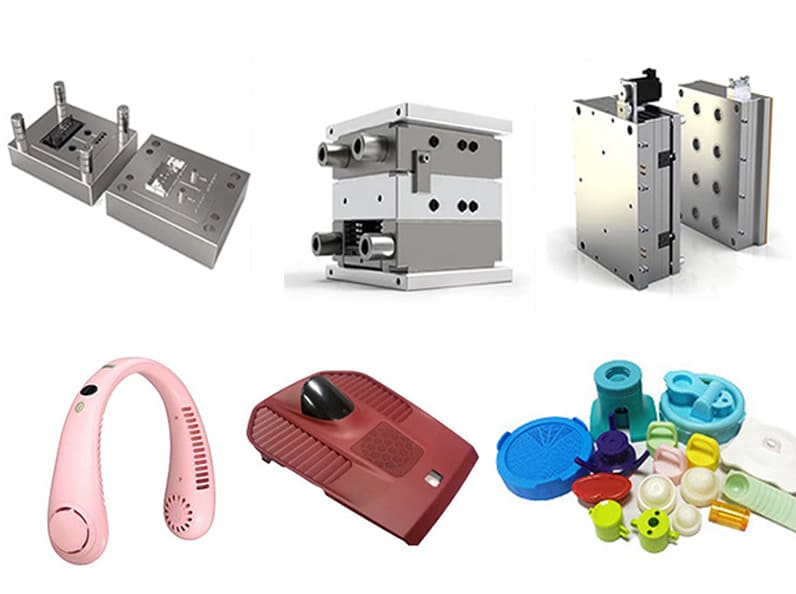
D. CNC Routing: Precision in Cutting
Definition:
CNC routing is a subtractive manufacturing process that utilizes a computer-controlled router to cut, trim, and shape plastic materials into specific designs.
How it Works:
- A computer-guided router follows a programmed path to cut through the plastic material.
- Suitable for creating 2D and 3D shapes with high precision.
Advantages:
- Versatility: Can be used for a wide range of plastic materials and thicknesses.
- Customization: Ideal for creating intricate designs and complex shapes.
E. Waterjet Cutting: Precision with Fluid Precision
Definition:
Waterjet cutting utilizes a high-pressure stream that combines water with abrasive particles to achieve precise cuts through plastic materials.
How it Works:
- Waterjet machines use a nozzle to propel a high-speed stream of water and abrasive particles, creating precise cuts.
- Suitable for a variety of plastic materials without causing heat-related damage.
Advantages:
- Minimal Material Stress: Waterjet cutting does not subject materials to thermal stress.
- Precision: Ideal for cutting complex shapes with high accuracy.
5. Challenges and Solutions of Machined Plastic Parts
The world of machining plastic parts is a realm of innovation and precision, but it’s not without its challenges.
This section delves into the hurdles faced in the manufacturing of machined plastic parts and explores the ingenious solutions that propel the industry forward.
1. Material Selection Challenges: Meeting Diverse Needs
Challenge:
Selecting the right plastic material for a specific application can be challenging, considering factors such as strength, temperature resistance, and chemical compatibility.
Solution:
Material Expertise: Employing knowledgeable engineers with expertise in plastic properties ensures optimal material selection.
Testing and Prototyping: Rigorous testing and prototyping help assess material performance under actual operating conditions.
2. Tooling Considerations: Preserving Precision
Challenge:
Tool wear and tear during machining can compromise precision and increase costs over time.
Solution:
High-Quality Tooling: Investing in high-quality cutting tools ensures longevity and sustained precision.
Regular Maintenance: Implementing a proactive maintenance schedule minimizes the risk of tool-related issues.
3. Machining Parameters and Settings: Balancing Act for Efficiency
Challenge:
Fine-tuning machining parameters such as feed rates and speeds for different plastics can be complex, impacting efficiency and product quality.
Solution:
Advanced CNC Programming: Utilizing advanced CNC programming optimizes machining parameters for each specific plastic.
Continuous Monitoring: Implementing real-time monitoring systems ensures adjustments can be made promptly for optimal efficiency.
4. Thermal Considerations: Precision Amidst Heat
Challenge:
Machining plastics can generate heat, leading to potential thermal damage and distortion.
Solution:
Coolant Systems: Implementing effective coolant systems dissipates heat during machining.
Precision Cooling: Incorporating precision cooling strategies helps maintain material integrity.
5. Environmental Impact: A Sustainable Approach
Challenge:
Environmental concerns regarding plastic waste and the carbon footprint of machining processes.
Solution:
Sustainable Practices: Embracing sustainable machining practices, including recycling and waste reduction.
Material Innovation: Exploring eco-friendly plastic alternatives that maintain performance standards.
6. Design Complexity: Navigating the Intricate
Challenge:
Creating complex designs with intricate features can pose challenges in terms of machining feasibility.
Solution:
Collaborative Design: Encouraging collaboration between design and machining teams ensures practical and efficient designs.
Advanced Machining Techniques: Utilizing advanced machining techniques, such as multi-axis machining, for intricate designs.
6. Looking for a Reliable Plastic Machining Company?
With state-of-the-art technology and a wealth of experience, Yijin Solution ensures that your plastic components are crafted with meticulous accuracy.
From prototype development to large-scale production, our reliable services guarantee satisfaction. Partner with us for a seamless and efficient plastic machining experience, delivering results that meet and exceed your expectations.
Conclusion
In conclusion, machined plastic parts are not merely components; they are the embodiment of craftsmanship, innovation, and the relentless pursuit of excellence.
As industries evolve, so too will the role and impact of machined plastic parts, ensuring that the future is marked by components that not only meet the demands of today but also anticipate the challenges of tomorrow.
 Call Us Today! (+86) 188-2253-7569
Call Us Today! (+86) 188-2253-7569